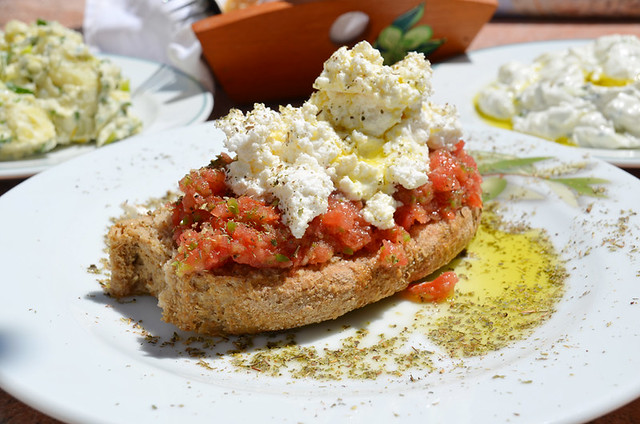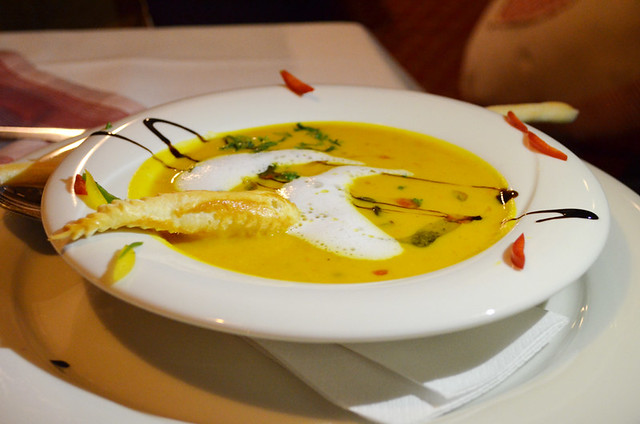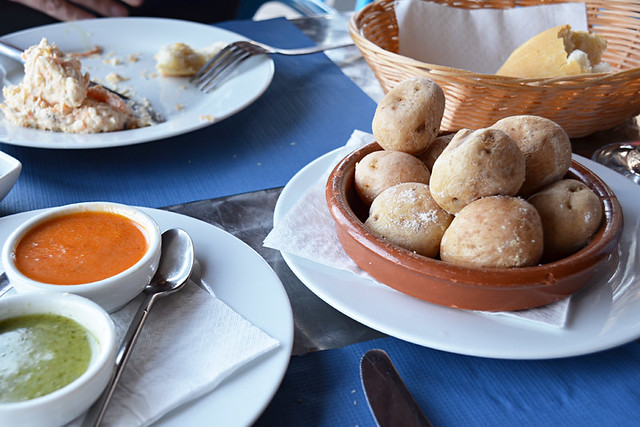Whilst writing an article about gastronomic specialities in various areas of Portugal, it dawned on me that none of the suggested dishes included were much use to anyone who was vegetarian. This wasn’t an oversight on my part, it’s just the way things are – the main culinary specialities in countries around Europe tend to involve meat, fish or seafood.
We’re only too aware of that. We’re not vegetarians (any more), but we don’t eat a lot of meat when we’re at home. Our dinner menus for this week include one meat and five vegetarian dishes. That’s a normal pattern. The seventh meal we decide on the night. We might be anally retentive enough to plan meals a week in advance, but we do cling on to a hint of culinary spontaneity.

When travelling we occasionally get tired of traditional cuisine in some destinations. This happens when restaurant menus vary little from one to another and mostly involve meat, meat, or meat. In these situations, we are on alert for any local dishes which don’t involve a slab of dead animal.
To restore the balance (a wee bit), these are some commonly available vegetarian dishes in various destinations around Europe whose trails we’ve explored on foot.

Western Crete, Greece
Greece is one of the destinations with a decent choice for vegetarians. On Crete we often found ourselves eating vegetarian dishes without thinking about it – Greek and dakos salads, tzatziki, courgette fritters, fava dips, fennel pancakes and so on. But my all time favourite remains spanakopita (feta cheese and spinach pie); it’s a regular in our kitchen.

Black Forest, Germany
Germany’s hinterland is not a place you’d associate with good vegetarian options. This is most definitely meat and two veg land, but hear me out. The Black Forest is rich in vegetables. I think of Schwarzwald and, as well as trees, huge orange pumpkins pop into my head, and so do wild mushrooms. Germany might be meaty, but Germans also love their soups. After wintry walking, a bowl of steaming pumpkin suppe perked up by a dash of Bärwurz was just the ticket. With chunky bread in tow, the soup in the Black Forest is more than filling enough to justify bypassing main courses and going straight for a generous slice of schwarzwälder kirschtorte (Black Forest gateau).

Corsica, France
Addictive and seriously filling, Corsica’s beignets are made with soft brocciu cheese mixed with mint and egg which are coated in a yeasty batter (sometimes made from chestnut flour) and deep fried. They’re probably not particularly healthy, but boy do they taste good. In one place we had them as a starter and were too full to eat the main course.

The Northern Lakes, Italy
Italy is another country which is vegetarian friendly without trying – any number of pastas are transformed by non-meat sauces, and then there’s the pizza. A standout dish for us was a simple tri-colour risotto in Novara. The trio consisted of a classic white risotto; a yellow Milanese risotto and a red cabbage risotto. Simplicity itself, yet each bursting with flavour. It taught us less is more when it comes to making risottos.

Lagarska Dolina, Slovenia
We didn’t encounter many vegetarian options in rural Slovenia, apart from pizza, but one we did was more of a starter – štruklji. Andy tried štruklji as main dish in one restaurant because nothing else on the menu appealed. It is basically cottage cheese rolled in either pasta, or pastry. The only ones we tried were wrapped in a dense-ish, dumpling-like pasta and came with a sweet jam and savoury sauce to boost the flavour. They didn’t leave a lasting impression – they were okay but with a lack of personality – but maybe that’s because we make our own version which involves cream cheese and guacamole wrapped in a tortilla which is then sliced, and each disc is topped with sour cream, grated cheddar, and paprika.

Tenerife, Spain
Spain’s another country which is historically not known for being vegetarian friendly; although, in the broader term there’s more choice than there was a few years ago. Eating tapas was always a decent option for filling up on non-meat dishes. Tapas dishes we ate regularly on Tenerife would include pimientos de Padrón, cheese boards, croquetas (spinach, mushroom, beetroot, blue cheese, and banana), ensaladilla Rusa (essential to check whether it’s one without tuna), queso asado (grilled cheese), tortilla española and the ubiquitous olives. These are all common around Spain so for a uniquely Canarian flavour we’d have papas arrugadas (wrinkled potatoes) with mojo verde and mojo rojo (Canarian sauces).

Zermatt, Switzerland
There is an aroma I now associate with Zermatt restaurants and that is one of hot, sweaty socks aka raclette. As a cheese freak I was looking forward to trying raclette and/or dipping things into fondues in Switzerland. However, the distinctive whiff which greeted us on entering a restaurant on our first night totally put me off for the duration of our visit. That doesn’t normally happen, but I just couldn’t bring myself to try it after that. Still, these are the dishes for any visiting vegetarian to try.

Alentejo, Portugal
Living in Alentejo on the border with Spain was testing gastronomically for us as restaurant menus there are dominated by meat dishes. The food is cheap and portions are ridiculously big, so a dream destination if meat’s your thing. But if it isn’t…
Saying that, in Castelo do Vide we lapped up one of the best gazpachos we’ve eaten anywhere, and one which was completely different from the traditional Spanish version. Another meat-free dish I enjoyed, which is common in Alentejo and a meal in itself, was sopa de tomate alentejana. Tomato soup British style is one of my least favourite soups. The Alentejo version is far superior and tastier.




Be the first to comment